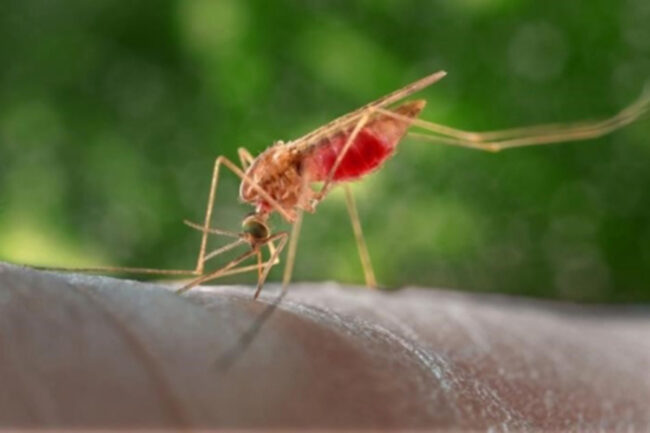Experts suggest that Chromolaena odorata could be used as an adjuvant and alternative to treat malaria, particularly in sub-Saharan Africa, where most of the population cannot afford or does not have access to primary health care services.
In the study, researchers found that Chromolaena odorata had potent anti-malarial properties comparable to standard malaria drugs chloroquine and artermether-lumenfantrine. The synergistic effects of its components facilitate an attack on the parasite and also lessen the breakdown of red blood cells by malaria infection.
Additionally, due to the synergistic interaction between the compounds in Chromolaena odorata, it may be a more effective treatment option given that the malaria parasite is constantly evolving and acquiring resistance to available drugs.
The study entitled “Anti-malarial and haematological evaluation of the ethanolic, ethyl acetate, and aqueous fractions of Chromolaena odorata” was in the BMC Complementary Medicine and Therapies.
Chromolaena odorata, also known as Christmas bush, bitter bush, siam weed, and baby tea (in English), akintola-ta-ku (Yoruba, Western Nigeria), and ishero (Urhobo, Southwestern Nigeria), is a scrambling shrub. It has been used traditionally for the treatment of wounds and cuts, dysentery, painkillers, diarrhoea, malaria, headaches, and toothaches.
The study evaluated the curative antimalarial effects of Chromolaena odorata leaf extract in animals in the laboratory. Forty-five (45) albino mice for the study were grouped into nine groups of five animals each.
Some animals in these groups were infected with the chloroquine-resistant strain of Plasmodium berghei. They were subsequently treated with chloroquine, a combination of artemether and lumefantrine (Coartem), and varying concentrations of the fraction from the aqueous leaf extract of C. odorata three days later.
Mice are commonly used in preclinical trials because of their biological similarities with humans. They can mimic malaria disease in humans and indicate how people might respond to the herbal mixture.
The findings from this study indicate that treatment with 400 mg/kg of the ethanolic fraction of C. odorata resulted in a significant decrease in malaria parasite load (97.6%), which was comparable to the activities of the conventional drugs chloroquine (98.6%) and Coartem (98.8%).
Its extract using ethyl acetate and ethanol at 400 mg/kg also ameliorated the significant alterations in the red blood cells, white blood cells, and platelets of the infected animals.
This study revealed that the ethyl acetate, ethanolic, and aqueous residual fractions of the aqueous extract of C. odorata possess highly active antimalarial properties with a percentage of chemo-suppression between 75.8 and 97.6%.
Both prevention and suppression involve destroying the malaria parasite. Cure means the herbal mixtures eliminate the parasites.
They suggested that the high antimalarial activity displayed by the ethanolic fraction could be due to the presence of quercetin and kaempferol, as detected by high-performance liquid chromatography (HPLC) analysis.
Despite considerable advancements in the development of antimalarial therapies, the worldwide burden of malaria persists. Regions of sub-Saharan Africa are most plagued by malaria; this is primarily due to the climatic conditions in this region, which foster the ideal habitat for female mosquitoes to reproduce and propagate.
In addition, there has been an increase in parasite resistance to antimalarial drugs and vector resistance to insecticides and treated nets, thereby leading to high mortality, particularly among pregnant women and young children.
Recent studies on malaria-infected patients have linked the disease to alterations in haemoglobin concentration and red blood cell counts, due to the parasite’s ability to break down red blood cells and suppress blood production in vertebrate hosts.
A plethora of studies have validated the anti-malarial activities of different plants in studies using animal models. Some of the major plants identified, particularly in Africa, are lemongrass, Morinda lucida (brimstone tree), neem, guava leaf, lime or osan wewe, bitter leaf, mango, avocado pear, garlic, Jatropha curas (Bini da Zugu in Hausa, Olulu idu in Igbo, lapalapa fun fun in Yoruba), onion, and Cassia fistula (golden shower).
An ethnobotanical survey conducted in Omu-Aran, Kwara State, also revealed the use of 31 plant species with origins in Omu-Aran in herbal antimalarial recipes. Some of the identified plants include the leaves and stem bark of Morinda lucida and Nauclea latifolia (African peach), as well as the leaf extracts of Chromolaena odorata, Tithonia diversifolia, and Lawsonia inermis.
The researchers reported in INNOSC Theranostics and Pharmacological Sciences that efficacy tests on them showed that most of the medicinal plants were more effective for the prevention of malaria than for curative purposes.
All the herbal decoctions were active in the curative test. They considerably reduced the parasite load on day 2 of treatment. At the end of treatment, none of the decoctions had completely cleared the parasites, but they all produced substantial clearance.
They, therefore, said all their decoctions could be considered active antimalarial candidates for the eradication of malaria parasites.
Also Read: Strike: We’re fully compliant — UNILAG SSANU, NASU
